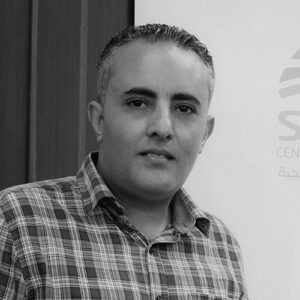Executive Summary
On March 15, the US launched Operation Rough Rider, a massive expansion of its aerial campaign against the Houthi group (Ansar Allah). The strikes followed a Houthi threat to resume targeting Israeli ships due to the blockade of aid into Gaza on March 2. Strikes have been taking place continuously as of the time of writing. The Houthi-affiliated Health Ministry has reported that as of April 14, at least 123 civilians have been killed and another 247 wounded, though the real numbers are probably higher. The airstrikes are fundamentally different than those undertaken during the Biden administration, both in intensity and scope, targeting not just missile installations and weapons depots, but also communications infrastructure and the group’s leadership. International scrutiny of the airstrikes briefly increased when the White House mistakenly leaked operational plans to a journalist.
The US administration has framed the campaign as a bid to restore freedom of navigation to the Red Sea and counter Iran, with which it is now pursuing talks. But the scale of the strikes has fueled reports that a government ground offensive could soon be underway in coordination with US or Saudi air cover. While anti-Houthi forces appear to be mobilizing on multiple frontlines, the positions of Saudi Arabia and the UAE, which directly fund the government and the largest affiliated militias, remain unclear.
The US has also ramped up economic pressure on the Houthis, redesignating the group a Foreign Terrorist Organization (FTO) on March 4. The sanctions are far stricter than those that preceded them and target Houthi financing networks and trade through the port of Hudaydah, particularly Iranian oil shipments. The sanctions have thrown the Yemeni banking system into turmoil, and there is growing concern about their effects on the country’s crumbling economy and underfunded humanitarian sector.
The humanitarian situation in Yemen remains dire. In February, the World Food Programme (WFP) reported that 62 percent of Yemenis endure inadequate food consumption, up more than 15 percent from last year. The rial has plummeted to record lows, undermining purchasing power in government-controlled areas. In the Houthi-held north, declining fuel imports and a ban on foreign wheat have furthered food insecurity. The problem is compounded by falling levels of international aid, including the winding up of USAID.
The Houthis have continued their campaign of arrests targeting humanitarian and UN workers, former US embassy staff, and members of civil society. Seven more UN employees were detained on January 25, and WFP announced the death of one of its staff in a Houthi prison on February 11. Three former embassy workers were also arrested.
Government infighting continues as Prime Minister Ahmed Awad bin Mubarak and Presidential Leadership Council (PLC) chief Rashad al-Alimi struggle to assert control. The spat has largely centered around the appointment of cabinet members and ambassadors. Al-Alimi appears to currently have the upper hand in the contest, but both Riyadh and Western diplomats have warned that Yemen can ill afford such rifts. The nearly insolvent government remains under significant pressure due to its inability to provide public services, a falling currency, a corruption scandal, and the recent disclosure of the high salaries enjoyed by the PLC.
The interim capital of Aden continues to experience crippling blackouts due to fuel shortages and longstanding mismanagement of the electricity sector. Power stations were shut down for two weeks in January, and cuts have become longer and more frequent with rising temperatures. The blackouts affect households and businesses as well as the provision of essential services, such as healthcare and waste management, and have become a perennial problem for the government. Protests decrying the situation were held in Aden, Abyan, and Lahj.
The oil-rich eastern governorate of Hadramawt has reemerged as a locus of political contestation. Once the scene of competing mobilization by the secessionist Southern Transitional Council (STC) and Islamist Islah party, its politics are now dominated by Deputy Governor Amr bin Habrish, who heads both the Hadramawt Inclusive Conference (HIC) and the Hadramawt Tribal Alliance (HTA). The latter announced the launch of its own militia on February 27. Bin Habrish has been able to hold the government and the STC hostage by suspending fuel shipments to Aden, demanding greater autonomy, a larger share of oil revenues, and the addition of thousands of Hadrami fighters to the government payroll. He reportedly secured Saudi support on a trip to Riyadh on March 20, and the HIC is now openly calling for self-rule.
This issue of the Yemen Review was prepared by (in alphabetical order): Elham Babukair, Ryan Bailey, Raidan Bassah, William Clough, Casey Coombs, Yasmeen Al-Eryani, Magnus Fitz, Tafweek Al-Ganad, Andrew Hammond, Khadiga Hashem, Abdulghani Al-Iryani, Yazeed Al-Jeddawy, Maged Al-Madhaji, Alexandra Nikopoulou, Ghaidaa Al-Rashidy, Salah Ali Salah, Maysaa Shuja Al-Deen, Hussam Radman, Lara Uhlenhaut, Ned Whalley, and Wadhah Al-Awlaqi.
The Yemen Review is produced by the Sana’a Center for Strategic Studies. Launched in 2016, it aims to identify and assess current diplomatic, economic, political, military, security, humanitarian, and human rights developments related to Yemen.
In producing The Yemen Review, Sana’a Center staff throughout Yemen and around the world gather information, conduct research, and hold private meetings with local, regional, and international stakeholders in order to analyze domestic and international developments.
This series is designed to provide readers with contextualized insight into the country’s most important ongoing issues.

 اقرأ المحتوى باللغة العربية
اقرأ المحتوى باللغة العربية






